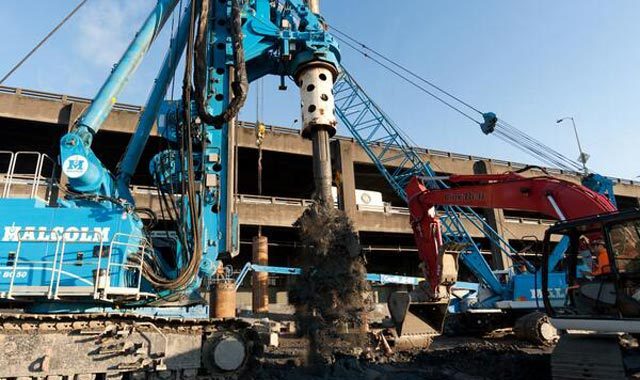
By Josh Kerns, MyNorthwest.com
Ancient artifacts could be in the path of new drilling to reach the broken Seattle tunnel machine known as “Bertha,” says an expert with the Washington Department of Transportation.
WSDOT announced Thursday the manufacturer of the drill, Japan’s Hitachi-Zosen, has come up with a tentative plan to dig a shaft to the machine stalled 120-feet below the surface to determine the cause of the problems that halted drilling in December.
Workers started boring a series of 4-inch wide probes Thursday to determine if archaeological work is needed.
It’s a part of the tunnel project’s environmental review process, and because of changes in WSDOT’s digging depths, they must complete additional cultural resources survey work.
“This work is being coordinated with the Washington State Department of Archaeology and Historic Preservation (DAHP) and tribal governments that are consulting on the project,” said WSDOT in a news release.
The shaft will be dug through an area filled in years ago along the Seattle waterfront that predates settlement of the city and could contain historical artifacts, says WSDOT cultural resources manager Steve Archer.
The drilling is expected to take about a week and shouldn’t delay the project even if artifacts of cultural significance are discovered, Publicola reports.
WSDOT Deputy Administrator Matt Preedy says contractors hope to announce a plan next week for the 120-foot shaft. The big question is whether crews will be able to simply replace damaged seals that protect the massive bearing that helps turn the machine’s cutter head or whether it will require workers to pull the cutter head itself out to the surface from its current location.
While Hitachi has been considering three different sized shafts, Preedy says the company is favoring the smaller of the three options, which would be faster and less expensive than the other options.
Correction: An earlier version of this story said ‘Indian artifacts’. WSDOT says the purpose of the soil testing is to look for anything of archaeological significance, which includes several possibilities, native artifacts among them.
The Associated Press contributed to this report
